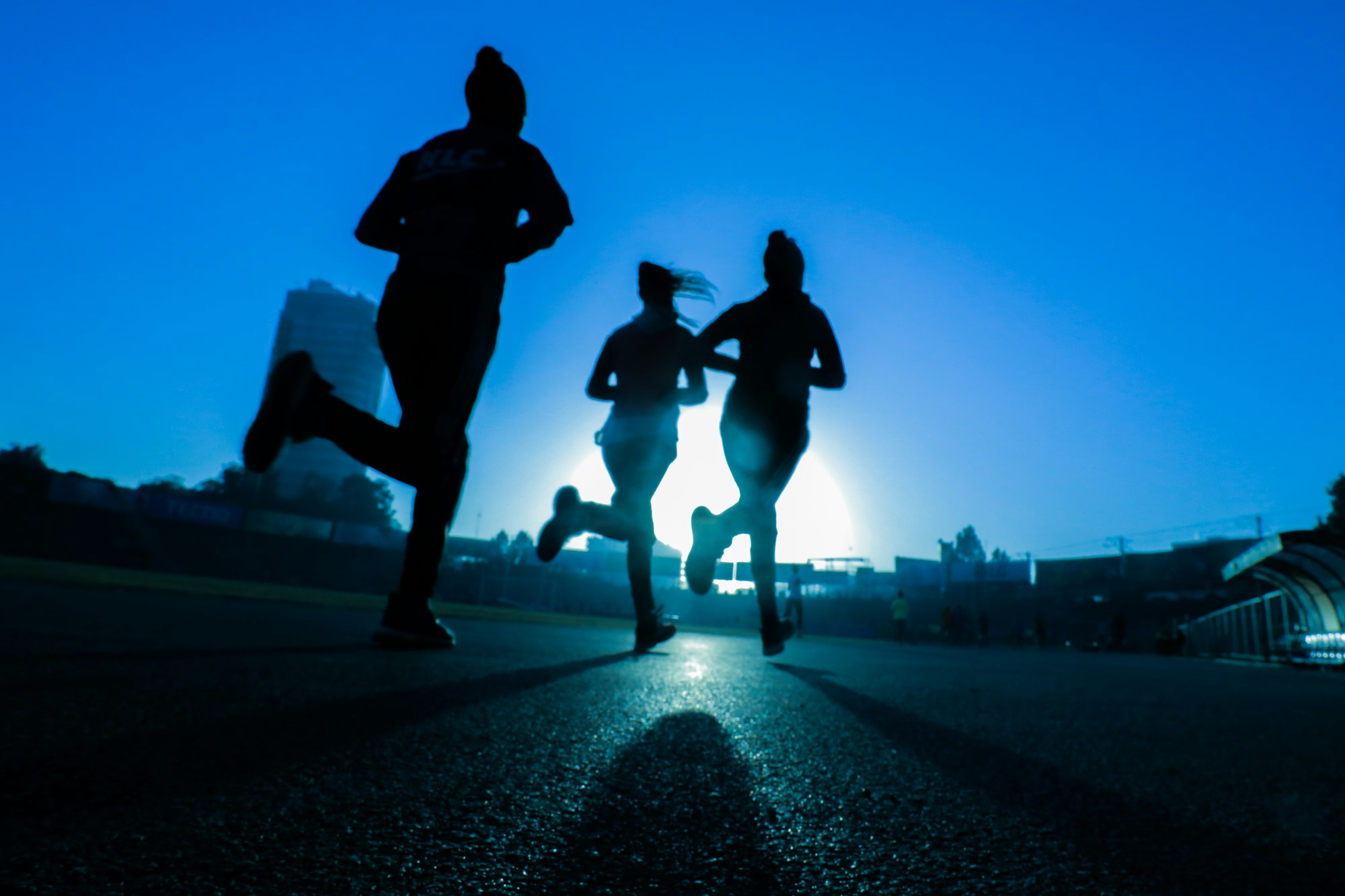How many times have you hesitated before urging your child outside, torn between the hope of vibrant health and the realities of a jam-packed schedule—or the lure of screens? For many parents, questions swell: How much movement is “enough”? Will a walk to the playground really help their future? What if my child isn’t interested in sports, or wrestling with asthma? The topic is buzzing with complexity, tangled with both anticipation and worry. And yet, across every stage of life, the health benefits of physical activity and sport offer families a powerful, science-backed foundation for health, resilience, and even joy. Here, you will discover the medical mechanisms—fueling everything from bouncy toddler steps to the steady stride of grandparents—and the practical keys to bringing more movement, in refreshingly simple ways, to your family’s day.
what is physical activity? how to make sense of it as a parent
It may surprise you: physical activity is not reserved solely for marathons or cricket matches under floodlights. Medical science describes physical activity as any movement powered by skeletal muscles—a definition both broad and reassuring. Brisk walking through your neighbourhood, a rainy-day boogie in the living room, helping in the kitchen, energetic gardening, cycling to school—all contribute to the web of activity needed for optimal health. Sport, meanwhile, is a more structured subset, often competitive, filled with specific rules and skill-building (think badminton, basketball, swimming, football). Yet in both, the engine of benefit remains the same: calories burned, muscles challenged, heart and lungs strengthened.
You may wonder—“What truly sets sport apart?” Consider this: sport brings out qualities of discipline, teamwork, and mental grit, while casual, daily movement easily adapts to age, ability, and mood. No need for trophies for results to shine; squeezing in ten minutes of dancing carries real value, especially when routines feel overloaded.
physical health benefits of physical activity and sport: science at work
keeping the heart happy—cardiovascular health unwrapped
The family heart, literally and figuratively, needs exercise. Aerobic movements—walking, cycling, running, skipping—work like a gentle pump primer. Over time, the heart grows more efficient, circulating blood with less effort; arteries stay supple, guarding against “blockages” (atherosclerosis), and blood pressure settles. Evidence links regular movement to lower risk of coronary heart disease, reduced stroke events, and less chronic hypertension. For children, early exposure to group games or simply climbing stairs helps lay down robust cardiovascular infrastructure, paving the way for a resilient adulthood.
balancing energy: healthy weight and the battle against obesity
Is your child a fidgeter? Maybe that bursts of play hold a hidden benefit: activity stokes energy expenditure, preventing excess fat storage and keeping metabolic engines running. Controlled studies show how regular movement not only burns calories but promotes healthy muscle mass. In practical terms, children grow taller and leaner, adults battle “belly fat”, and metabolic processes stay sharp, guarding against diabetes and lifelong weight struggles. Short bodyweight routines or family dance-offs keep muscles active—no fancy equipment necessary.
bone and joint strength: why every leap matters
Bone health is built—not gifted. Weight-bearing activities (skipping, brisk walking, jumping, gymnastics) create precise “stress” signals that lead to denser, stronger bones. Children and teens reach peak bone mass in these formative years, dramatically lowering risk for osteoporosis—a silent threat—in later life. For adults and grandparents, even moderate exercise helps maintain bone mineral density, reduce joint stiffness, and preserve balance, directly minimizing fall risk—a frontline defence for staying independent as the years advance.
digestion gets a boost
Ever noticed your digestion easing up after a gentle stroll? Medical research confirms: movement jolts the digestive tract awake, encouraging regular, comfortable bowel movements and reducing constipation. Inactive days often mean sluggish gut transit—a common issue in both toddlers and office workers alike.
strong lungs and immunity: everyday protection
Regular exercise does more than strengthen biceps—it builds the lungs and the immune shield. Lungs expand fully during play, respiratory muscles grow stronger, and oxygen transfer across the bloodstream becomes more efficient. Studies indicate that active children catch fewer colds, adults enjoy robust immunity, and inflammation markers decrease across all ages. Especially for those managing asthma or allergies, regular, moderate movement can make breathing easier and improve symptom control.
defending against chronic disease
Parents often worry: Could inactivity sow seeds of serious illness? Science answers with clarity: yes. Sedentary lifestyles drive chronic conditions—type 2 diabetes, high blood pressure, and even some forms of cancer. Regular movement fine-tunes blood sugar regulation, lowers systemic inflammation, balances hormones, and prevents dangerous fat accumulation around organs. And these health benefits of physical activity and sport begin with small, consistent shifts—sometimes as simple as a nightly walk.
boosting daily energy and flexibility
Tired all the time? Surprisingly, the antidote is more movement, not less. Physical activity boosts energy production by increasing the number and function of cellular “powerhouses” (mitochondria). Flexible muscles and joints enable ordinary tasks—lifting, squatting, even sitting on the floor with your child—without aches. Regular stretching and active routines mean fewer injuries and greater confidence in movement, at any age.
mental health benefits: a brain and mood reset
releasing stress, lifting mood
Physical activity isn’t a magic cure, but its effects border on the remarkable. Movement triggers a release of endorphins and serotonin—the so-called “happiness chemicals”—in the brain. These neurotransmitters help buffer life’s daily stresses, lessen anxiety, and moderate symptoms of depression. For children and adults, regular sport or play teaches the brain to weather emotional storms, and even a brisk walk can prompt a genuine mood lift lasting hours.
memory, focus, and learning power
Ever noticed sharper thinking after a jog or yoga session? The phenomenon is real—movement increases blood flow to the brain, fueling concentration and creativity. Children show marked improvements in academic performance, while older adults reap cognitive protection against memory decline and neurodegenerative diseases. Exercise also boosts the release of “growth factors” (like BDNF—brain-derived neurotrophic factor), supporting brain cell health, learning, and rapid problem-solving.
sleep: the unsung reward
Sleep eluding your family? Active days are closely linked to easier sleep onset and deeper, more restorative cycles at night. Scientific studies confirm that consistent exercise lowers insomnia risk in adults, helps children drift off smoothly, and heightens daytime energy. Not just about exhaustion—regular movement also balances body temperature and hormone cycles needed for healthy sleep architecture.
building self-confidence and emotional resilience
It’s true—mastering a new physical skill or sticking with small fitness goals nurtures genuine self-confidence. Children (and adults!) learn the immense value of effort, patience, and persistence. The success of finally skipping the rope or finishing a morning jog—no matter how modest—plants seeds of resilience, translating to other areas of life.
social and family connections: weaving relationships through activity
friendship, teamwork, and connection
Group sports and playful activities do something curious: they pull people together. Children learn honest communication, conflict resolution, and empathy as they negotiate the rules of tag or strategize on a football field. For adults, group fitness sessions or community walks open new friendships, battling loneliness—an often-overlooked struggle in parenting life.
togetherness at home: bonding and laughter
Family activities—be it cycling, nature treks, or outdoor games—offer rare chances for laughter, shared memories, and pockets of conversation away from daily demands. Even collective, gentle routines like post-dinner strolls become rituals that strengthen bonds, relieve stress, and break up isolation, especially when home life feels routine or overwhelming.
growing leaders and nurturing inclusion
Children stepping into leadership roles in sports, or simply “captaining” a home relay race, taste both responsibility and collaboration. Active community environments encourage everyone—regardless of abilities—to participate, fostering belonging, acceptance, and lifelong social networks.
the health benefits of physical activity and sport across the lifespan
childhood and adolescence: foundations set for life
Early years hold an outsized influence. Regular movement builds sturdy bones, flexible joints, and robust muscles. Exposure to various activities—swimming, martial arts, dance, or team sports—supports natural curiosity and skill exploration. Social skills, confidence, and emotional stability follow, dramatically reducing the risk of childhood obesity and chronic diseases developing later. Even a patchwork of playful routines yields significant benefits.
adulthood: balancing demands with energy
Adulthood often means long hours seated, endless responsibilities. Yet, the science is unequivocal—embedding movement into routine guards the heart, lifts mood, and manages weight. Adults who carve out even modest activity become role models, passively shaping healthy family habits, and securing their own longevity and well-being.
older adulthood: independence and vitality
With age comes change: natural losses in muscle, bone density, and balance may threaten independence. Regular physical activity—gentle yoga, group stretches, brisk walks—staves off frailty, sharpens memory, and safeguards against chronic conditions. Community activities add a layer of social connection, softening feelings of isolation.
choosing the right activities for the family: options for every mood
heart and lung heroes: aerobic activities
Walking, cycling, skipping, and swimming invigorate the cardiovascular system. The key isn’t complexity or expense—walking 30 minutes five times weekly, or gathering the family for a weekend bike ride, lays an ideal foundation. Nature-based activity also lifts mood and triggers vitamin D production (vital for strong bones).
strength: resistance for all ages
Bodyweight exercises—think push-ups, wall sits, or gentle band routines—suit both the young and the more mature. For children, climbing frames or gymnastics combine fun and muscular challenge. For older adults, resistance bands maintain muscle mass, combat muscle “wasting” (sarcopenia), and slow age-linked decline.
flexibility, balance, and coordination
From playful hopscotch to yoga asanas, stretching boosts flexibility and hones balance. These practices are powerful tools in preventing falls and maintaining movement confidence across the lifespan.
the outdoors (and why screens just can’t compete)
Fresh air and green spaces bring their own magic. Parks, forest trails, local gardens—such settings encourage movement, decrease screen exposure, and foster wonder. Regular outdoor time powerfully combines the health benefits of physical activity and sport with sensory enrichment.
practical recommendations: what the science says
- Children/Teens: Aim for 60 minutes or more of movement each day, mixing vigorous play with activities that strengthen bones and muscles.
- Adults: 150–300 minutes of moderate-intensity activity weekly (for example, brisk walking), or half as much if the activity is vigorous, plus muscle-strengthening twice per week.
- Older Adults: The same as adults, with special attention to balance and flexibility to help prevent falls—always adapt to comfort and any medical advice.
Begin gently, especially if routines are new—let each family member weigh in on favourites. Build simple habits, like using stairs, walking after meals, or joining free community sessions. Adapt for abilities, listen for warning signals (pain or exhaustion), and keep enjoyment a top priority—sustainable change is rarely born from guilt.
If considering intense or highly competitive sports (like marathons), especially after a health diagnosis or break, a medical opinion is sound—a thorough check-up, personalized advice, and a phased approach maximize safety.
overcoming obstacles: making movement possible
motivation, goals, and family routines
Set realistic, flexible goals: maybe weekly family walks, a star chart for evening stretches, or small rewards for individual progress. Let variety spark excitement and introduce friendly challenges or shared achievements—the science is clear, small changes compound, yielding big results.
accessibility and keeping things safe
Limited equipment or resources? Local parks, public play spaces, and free online sessions lower the barriers. Supervise younger children, choose well-fitting shoes or gear, and adapt activities for comfort—focus on participation, not perfection.
tracking, celebrating, and recovery
Use charts, stickers, or health apps to track activity; celebrate milestones—however modest. Prioritize rest after activity, remaining alert for muscle fatigue or soreness. Every family member’s experience is unique, and thoughtful adjustments help movement remain positive and sustainable.
the science behind the health benefits of physical activity and sport
what happens inside the body?
Movement is transformative. Regular activity strengthens heart muscles, boosts oxygen delivery by building new blood vessels (angiogenesis), and regulates blood sugar, cholesterol, and even inflammation at the cellular level. On a deeper note, physical activity stimulates mitochondrial (energy factory) biogenesis, and bone as well as muscle tissue remodeling, vital for endurance and daily resilience.
mind and society: more than muscles
Activity sparks the production of brain-derived neurotrophic factor (BDNF), a protein vital for learning and neuroprotection. Shared sport and play are powerful sources of social connection, motivation, and emotional support, nurturing confident, emotionally secure children and resilient adults.
key takeaways
- The health benefits of physical activity and sport extend from the immune system to mood, from childhood growth to healthy ageing.
- Regular movement reduces risk for cardiovascular disease, diabetes, some types of cancer, and supports strong muscles, bones, and joints.
- Activity fuels better sleep, sharper focus, and emotional resilience.
- The best results come from activities matched to interests and needs—routine builds with enjoyment, not obligation.
- Resources and thoughtful support can make every environment, regardless of limitations, a place for the health benefits of physical activity and sport to take root.
- For guidance or specific health queries, consulting a healthcare professional always helps.
- For more support, advice and free child health questionnaires, you can download the application Heloa.
questions parents ask
how can i motivate my child who is not interested in sports or exercise?
Children’s enthusiasm for movement may ebb and flow—sometimes, the structured nature of sport feels overwhelming. What helps? Gently expose children to a variety of options, mix solo and group play, and involve the entire family: a group dance, an evening walk, playful household challenges. Celebrate all progress, however modest, and foster a relaxed, pressure-free space for exploration. Patient encouragement—without comparison—helps even the most hesitant child discover the joy (and health benefits) of movement.
are there specific sports or activities particularly good for children’s development?
Every form of movement supports child growth, but certain activities offer added rewards. Swimming, gymnastics, and martial arts enhance coordination, body awareness, and discipline, while team sports (like football, basketball) foster cooperation, negotiation, and social skills. Let your child’s interests guide the choice—variety encourages broader development, and feeling included is as valuable as acquiring technical skills.
what should i do if my child has a medical condition—are sports and physical activities safe?
Most children, even those living with medical conditions like asthma or diabetes, benefit from tailored movement. The essential step is to consult your child’s healthcare provider for personalized advice. Sports and activities can usually be adapted—for example, by modifying intensity, breaks, or equipment—so your child stays safe and engaged. Open discussion with coaches and teachers helps create a supportive environment; parental encouragement plays a powerful part in building confidence and well-being.
Further reading:









